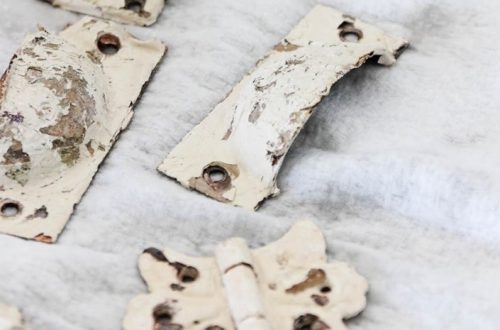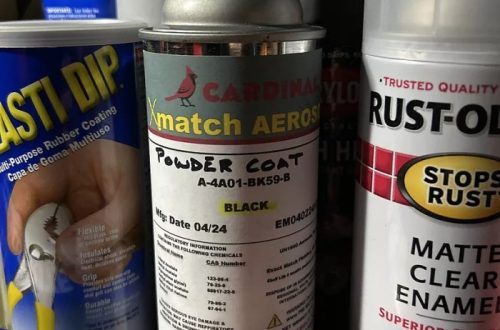Incorporating Clipart into Science Curriculum
Integrating science beaker clipart into the science curriculum can make lessons more visual and engaging. Clipart serves as a versatile tool that can help students visualize concepts and processes that might be abstract or difficult to grasp. Here are some effective ways to incorporate beaker clipart into science education:
Experiment Illustrations:
Use beaker clipart when explaining laboratory experiments. It helps students understand the setup before they conduct the actual experiment.
Step-by-Step Procedures:
Diagrams with clipart can outline the steps of a scientific process. This approach can aid in breaking down complex instructions into manageable parts.
Classroom Handouts:
Adding clipart to handouts can make the content more appealing and less intimidating. It can also serve as a memory aid for visual learners.
Flashcards:
Create flashcards featuring science beaker clipart to teach scientific vocabulary. Visual cues associated with words help students retain information better.
Digital Presentations:
Enhance digital slideshows with clipart. This helps to keep students focused and provides a break from text-heavy slides.
Science Journals:
Encourage students to use clipart when they document their observations and hypotheses in science journals. This can spark creativity and personal expression.
Remember to consider the age and ability level of your students to ensure that the integration of science beaker clipart is effective. The key is to use it in a way that complements the lesson content and aids comprehension.

Enhancing Classroom Presentations with Beaker Images
To add a spark to classroom presentations, science beaker clipart can be an amazing resource. Here’s how teachers can use these images to enhance their lessons:
- Highlight Key Points: Place beaker clipart next to important concepts during a presentation. This draws the eye and emphasizes critical information.
- Simplify Complex Ideas: Use a series of beaker images to break down intricate scientific phenomena into easier-to-understand segments.
- Interactive Quizzes: Incorporate beaker clipart in quiz slides to make them more interactive. This turns a simple Q&A into a more dynamic activity.
- Visual Storytelling: Tell a story with clipart that showcases a scientific process. This helps students follow along and remember the steps when performing the actual experiment.
- Consistent Theme: Employ beaker images throughout a presentation to create a visual theme. This helps with consistency and reinforces the science branding within the classroom.
By using beaker clipart effectively, presentations can become more than just lectures. They transform into a visually stimulating experience that can engage students and help them grasp complex scientific concepts with ease. Whether it’s for a simple daily lesson or a comprehensive review session, integrating these visuals can make a significant difference in student understanding and interest.
Crafting Interactive Science Worksheets
Interactive science worksheets enhanced with science beaker clipart can greatly benefit students’ learning experience. By integrating these visual elements, worksheets become more than just text; they turn into engaging educational tools that encourage active learning. Here are ways to use beaker clipart in interactive worksheets:
- Visual Aids: Place clipart next to questions to illustrate them. This helps students to visualize problems and think critically.
- Matching Activities: Create matching exercises where students connect terms to the corresponding beaker clipart. This enhances memory retention.
- Fill-in-the-Blank Diagrams: Use beaker images in diagrams where students fill in labels. This aids in learning the parts of lab equipment.
- Sequence Ordering: Students can order steps in a process by rearranging clipart. This teaches sequencing and logical thinking.
The key to crafting these worksheets is to align the use of science beaker clipart with educational objectives. Teachers should ensure that the visuals are not just decorative but serve a clear purpose in aiding understanding and interaction with the material. With creativity, science beaker clipart can make worksheets a powerful tool in the science curriculum.

Designing Engaging Science Project Posters
Incorporating science beaker clipart into project posters can transform them into captivating educational displays. Here’s how you can design attention-grabbing posters for science projects:
- Title Attraction: Use bold clipart as part of the poster title. It grabs attention and sets the project tone.
- Data Visualization: Pair clipart with graphs or charts. This visual combination can help students interpret data more easily.
- Method Illustration: Show experimental methods with step-by-step clipart. This makes the process easy to follow and understand.
- Results Highlight: Emphasize key findings by flanking them with relevant beaker images. The visuals underscore significant data points.
- Conclusion Aid: Draw conclusions with the help of clipart that summarizes the experiment. It provides a visual recall of the entire project.
Designing posters with science beaker clipart can help students express their work in a visually appealing way. It also aids the audience in grasping complex concepts at a glance. Teachers can encourage students to think creatively by integrating these cliparts thoughtfully and meaningfully in their posters.
Creating Educational Science Blog Visuals
In the world of digital content, visuals are key to capturing attention. Educational science blogs are no exception. Using science beaker clipart can significantly enhance the visual appeal of your educational blog posts. Here are ways you can create engaging visuals for your science blog:
- Blog Headers: Start your post with a bang by including a captivating clipart in the header. It sets the tone and draws readers in.
- Infographics: Combine beaker clipart with facts and statistics to create infographics. These make complex information easier to digest.
- Tutorial Graphics: Use beaker images to guide readers through science experiments or concepts in tutorial posts.
- Featured Images: Select standout beaker cliparts to accompany your blog’s featured images. They summarize the content at a glance.
- Breaking Up Text: Insert clipart throughout your posts to break up large chunks of text. This keeps readers engaged and helps them focus.
- Social Media Teasers: Share small sections of your blog with clipart on social media. This can entice followers to read the full post.
Remember, the aim is to complement your written content, not distract from it. Use science beaker clipart thoughtfully to create an educational science blog that’s both informative and visually appealing. With the strategic placement of clipart, your blog’s engagement and readability can soar.
Developing Digital Science Learning Resources
Digital learning resources are crucial in today’s tech-driven education. Leveraging science beaker clipart can enhance these resources, making science more accessible and enjoyable. Here are ways to infuse beaker clipart into digital learning materials:
- Interactive eBooks: Embed beaker clipart in digital textbooks. The clipart can mark chapters or illustrate concepts, aiding students as they navigate through content.
- Online Quizzes: Use clipart to create visually engaging online quizzes. They can categorize questions or show progress, keeping learners motivated.
- Educational Apps: Develop apps that feature beaker clipart in games and simulations. These visuals help simulate lab experiences, making learning fun.
- Video Lessons: Enhance instructional videos with clipart. It helps explain steps in experiments, serving as useful visual cues.
- Virtual Labs: Integrate clipart in virtual lab environments. It helps distinguish between different chemicals and equipment, improving user experience.
By integrating science beaker clipart into digital science resources, educators can create immersive and interactive experiences for students. These visuals not only make learning more engaging but also reinforce memory recall. Use clipart purposefully to ensure it enhances the educational value of digital resources.

Personalizing Classroom Decor
The right classroom environment can inspire and motivate students. Here’s how to use science beaker clipart to personalize your classroom decor:
- Themed Bulletin Boards: Craft bulletin boards with a science theme. Add beaker clipart to make them pop.
- Door Decorations: Welcome students with a door covered in colorful beaker images. It sets an exciting science vibe.
- Wall Art: Create wall art by combining beaker clipart with famous science quotes. It will inspire and decorate.
- Desk Labels: Use clipart to label student desks or groups. It helps with organization and adds a fun touch.
- Supply Stations: Mark areas where students pick up lab materials with beaker clipart. It makes finding supplies a breeze.
Personalizing classroom decor with science beaker clipart is easy and effective. It enhances the learning atmosphere and makes science visually appealing. When students enter a room filled with creative visuals, they feel energized and ready to learn.
Boosting Student Engagement Through Creative Visuals
Using science beaker clipart can greatly increase student engagement. Here’s how educators can boost interest and interaction through creative visuals:
- Interactive Display Boards: Incorporate beaker clipart in display boards around the classroom. Students become more involved when visuals accompany lessons.
- Learning Games: Design games where beaker images are integral to the gameplay. This format turns learning into a playful experience.
- Classroom Challenges: Set up challenges where students use clipart to depict scientific concepts. It sparks competition and interest.
- Group Projects: Encourage group work using clipart as part of the project design. It fosters collaboration while keeping the task enjoyable.
- Reward Systems: Create a reward system with clipart stickers for achievements. Visual rewards can motivate students to excel.
The goal is to enhance interactivity and make the learning process more captivating. By strategically employing science beaker clipart, teachers can create a dynamic classroom atmosphere that promotes active learning and sustained engagement.




